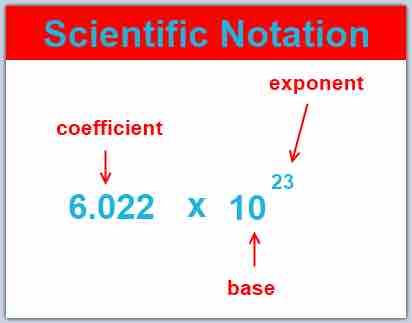Scientific Notation: A Matter of Convenience
Scientific notation is a way of writing numbers that are too big or too small in a convenient and standard form. Scientific notation has a number of useful properties and is commonly used in calculators and by scientists, mathematicians and engineers. In scientific notation all numbers are written in the form of

Scientific Notation
There are three parts to writing a number in scientific notation: the coefficient, the base, and the exponent.
Most of the interesting phenomena in our universe are not on the human scale. It would take about 1,000,000,000,000,000,000,000 bacteria to equal the mass of a human body. Thomas Young's discovery that light was a wave preceded the use of scientific notation, and he was obliged to write that the time required for one vibration of the wave was "
A Simple System
Scientific notation means writing a number in terms of a product of something from 1 to 10 and something else that is a power of ten.
For instance,
Each number is ten times bigger than the previous one. Since
Scientific notation displayed calculators can take other shortened forms that mean the same thing. For example,